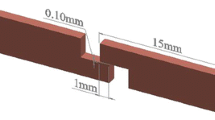Abstract
Solder joint interconnects are mechanical means of structural support for bridging the various electronic components and providing electrical contacts and a thermal path for heat dissipation. The functionality of the electronic device often relies on the structural integrity of the solder. The dimensional stability of solder joints is numerically predicted based on their mechanical properties. Algorithms to model the kinetics of dissolution and subsequent growth of intermetallic from the complete knowledge of a single history of time-temperature-reflow profile, by considering equivalent isothermal time intervals, have been developed. The information for dissolution is derived during the heating cycle of reflow and for the growth process from cooling curve of reflow profile. A simple and quick analysis tool to derive tensile stress-strain maps as a function of the reflow temperature of solder and strain rate has been developed by numerical program. The tensile properties are used in modeling thermal strain, thermal fatigue and to predict the overall fatigue life of solder joints. The numerical analysis of the tensile properties as affected by their composition and rate of testing, has been compiled in this paper. A numerical model using constitutive equation has been developed to evaluate the interfacial fatigue crack growth rate. The model can assess the effect of cooling rate, which depends on the level of strain energy release rate. Increasing cooling rate from normalizing to water-quenching, enhanced the fatigue resistance to interfacial crack growth by up to 50% at low strain energy release rate. The increased cooling rates enhanced the fatigue crack growth resistance by surface roughening at the interface of solder joint. This paper highlights salient features of process modeling. Interfacial intermetallic microstructure is affected by cooling rate and thereby affects the mechanical properties.
Similar content being viewed by others
References
C.J. Thwaites, W.B. Hampshire, Welding Res. Sup. 323 (1976).
W.J. Plumbridge, J. Mater. Sci. 31, 2501 (1996).
M. Ohring, Reliability and Failure of Electronic Materials and Devices (San Diego, CA: Academic Press, 1998).
P.T. Vianco, ASM Handbook (Materials Park, OH: ASM, pp. 964–984.
K. Kawashima, T. Ito, and M. Sakuragi, J. Mater Sci. 27, 6387 (1992).
B.P. Kashyap and G.S. Murty, J. Mater. Sci. 18, 2063 (1983).
A. Dasgupta, C. Oyan, B. Barker, and M. Pecht, J. Electron. Pkg., ASME Trans. 114, 152 (1992).
G. Grossman, IEEE Trans. Comp., Pkg., Mfg., Technol. 22, 71 (1999).
D. Yao and J.K. Shang, IEEE Trans. Comp., Pkg., Mfg., Technol. Part-B 19, 154 (1996).
R.J. Ross, Jr., L.C. Wen, and G.R. Mon, J. Electron. Pkg., ASME Trans. 115, 165 (1993).
Z. Mei, J.W. Morris, Jr., M.C. Shine, and T.S.E. Summers, J. Electron Mater. 20, 599 (1991).
M. Schaeffer, W. Laub, J.M. Sabee, and R.A. Fournelle, J. Electron. Mater. 25, 992 (1996).
S.P. Gadag and S.K. Patra, to be submitted.
R. Satoh, M. Ohshima, K. Arakawa, and K. Hirota, J. Jpn. Inst. Metals 49, 26 (1985).
S.T. Rao, ASM Handbook, vol. 19 (Materials Park, OH: ASM, pp. 883–891.
D. Frear, D. Grivas and J.W. Morris, J. Electron. Mater 16, 181 (1987).
D.R. Frear and P.T. Vianco, Metall. Mater. Trans. A 25, 1509 (1994).
D.R. Frear, JOM 48, 49 (1996).
R.C. McClung and J.C. Newman, Jr., editors, Advances in Fatigue Crack Closure Measurements and Analysis, ASTM STP 1343 (Philadelphia, PA: ASTM, 1999), p. 496.
M.T. McCormack, Y. Degani, H.S. Chen, and W.R. Gesick, JOM 48, 54 (1996).
Author information
Authors and Affiliations
Rights and permissions
About this article
Cite this article
Gadag, S.P., Patra, S. Numerical prediction of mechanical properties of Pb-Sn solder alloys containing antimony, bismuth and or silver ternary trace elements. J. Electron. Mater. 29, 1392–1397 (2000). https://doi.org/10.1007/s11664-000-0124-2
Received:
Accepted:
Issue Date:
DOI: https://doi.org/10.1007/s11664-000-0124-2




